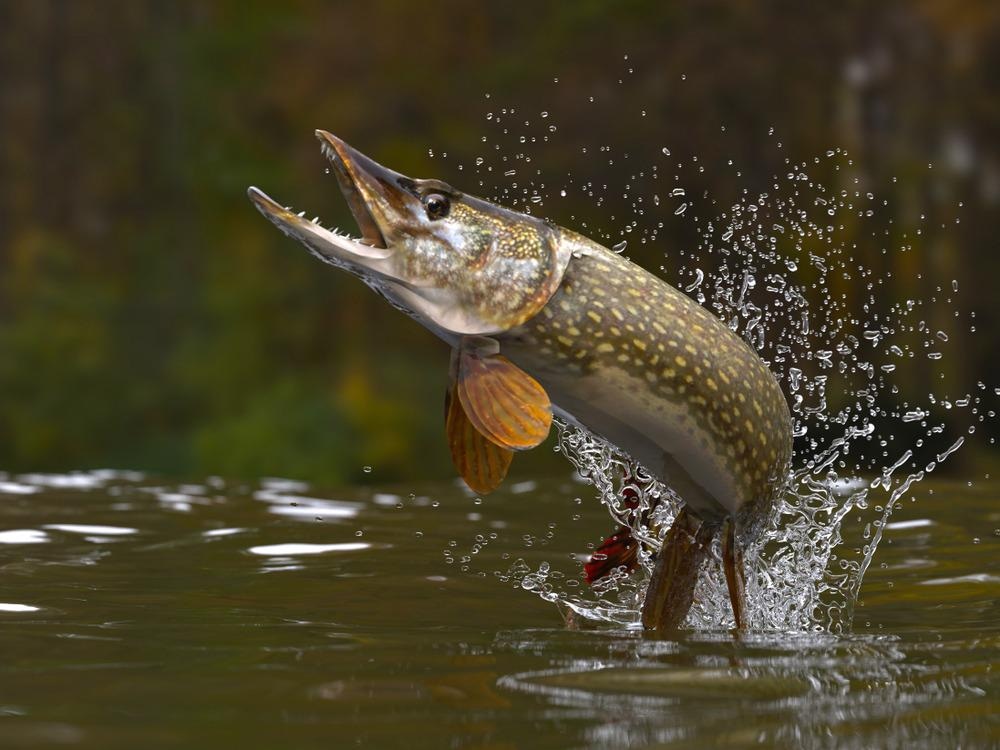In a study published in the journal Science of the Total Environment, the number and development of an apex predator, the Northern Pike, were measured following the exposure to nanosilver.

Study: Whole-lake nanosilver additions reduce northern pike (Esox lucius) growth. Image Credit: bekirevren/Shutterstock.com
Nanosilver and Its Uses
Nanosilver (AgNP) is extensively utilized in a variety of consumer items, more prominently garments such as sportswear, trousers, and stockings, for antimicrobial, antiviral, and odor-reducing characteristics. As a consequence, when the apparel is cleaned, nanosilver is discharged into urban wastewaters.
The majority of nanosilver divides into sewage sludge at wastewater treatment facilities, with about 2-3 percent escaping in the outflow. Nanosilver may get sulfidated in wastewater treatment plants (WWTPs) due to lowering circumstances, slowing its breakdown into Ag ions. Nevertheless, when sludge output is significant, nanosilver emissions in the wastewater may rapidly rise.
Disadvantages of Silver Nanoparticles
With documented observed effluent levels spanning from 6 ng L-1 to 2.89 g L-1 and anticipated values in natural rivers spanning from the low ng L-1 region to the low g L-1 region, even this modest proportion of nanosilver discharge poses a major hazard to aquatic species.
Once in the aquatic system, nanosilver may cluster into bigger particles and sink into the soils, or it can be snapped up by creatures. Nanosilver dissolving may also lead to the emission of Ag ions into liquid, which is very harmful to sea creatures.
Past experimental investigations of the impacts of nanosilver on many fish species revealed negative effects. Still, these trials were often carried out at levels that were not ecologically applicable, that is, greater than the quantities anticipated to be experienced in the wild.
Nanosilver proved hazardous to the fish at exceptionally high levels in tests using different life cycles of Fathead Minnow, producing deaths and developmental defects in produced eggs. Another research with mature Fathead Minnow subjected to lower quantities of nanosilver found changed expression of genes in the lungs and fluctuating mucous secretion, first rising and then becoming depressed relative to controls.
Harmful Effects of Silver Nanoparticles on Fish
Numerous species of fish subjected to nanosilver at g/L levels, notably young Atlantic Salmon, have shown a variety of toxicant reactions involving respiratory problems. Rainbow trout treated to nanosilver at a dose expected to be met in the ecosystem deposited Ag in organs and demonstrated a stress reaction of higher circulating serum levels.
Concerns about the possibility of nanosilver release into the atmosphere and the effects on marine microbes prompted a whole-lake nanosilver addition trial in Lake 222. Here, a combined amount of 15-kilogram nanosilver was given to the lake over two field periods.
Prior to the whole-lake inclusion investigation, the IISD-ELA performed mesocosm experiments on the path and impacts of nanosilver. The introduction of nanosilver did not affect numerous bacteria or algae in the microhabitats. Still, plankton biodiversity decreased, while the quantity of the surviving species rose up to fourfold relative to the treated group.
Assessments of Northern Pike ages calculated by fin rays revealed that precise consistency amongst readers was reasonable, and consistency between all authors inside one year was extremely high. Age exaggeration was seen in age categories two and three fish from originally provided DFO ages. Nevertheless, this prejudice should limit the capacity to detect large reductions in size-at-age.
Despite this possible bias, substantial reductions in size-at-age for such age groups were found. Moreover, the strongest patterns in development reductions in age categories 4 and 5 were noticed. The strong consensus between the novice and DFO-assigned dates was superior, indicating that the findings were not susceptible to any between-reader variance.
Key Outcomes of the Study
The present study's findings showed the possibility of indirect impacts on Northern Fish leading to variations in different trophic levels, notably the quantity of Yellow Perch. Nevertheless, direct effects from nanosilver contamination may have also had a role in Northern Hook yield reduction.
The sustained inhibition of Northern Fish development up to two years after the termination of nanosilver injections suggested that the effects lasted far beyond the duration of nanosilver consumption. Likewise, other whole-lake investigations showed considerable delays in the longevity of consequences, lasting years to centuries beyond the intervention phase.
This may be especially true in the case of nanosilver pollution since the substance that deposits into the sands may be a continuous cause of "in situ" groundwater pollution. The ability of nanosilver to gradually emit Ag+, the same property that made it useful as an antibacterial agent, underscored the possibility of long-term effects on aquatic environments.
Reference
Slongo, B. D., Hayhurst, L. D., Drombolis, P. C., Metcalfe, C. D., & Rennie, M. D. (2022). Whole-lake nanosilver additions reduce northern pike growth. Science of the Total Environment. Available at: https://www.sciencedirect.com/science/article/pii/S0048969722033162?via%3Dihub
Disclaimer: The views expressed here are those of the author expressed in their private capacity and do not necessarily represent the views of AZoM.com Limited T/A AZoNetwork the owner and operator of this website. This disclaimer forms part of the Terms and conditions of use of this website.